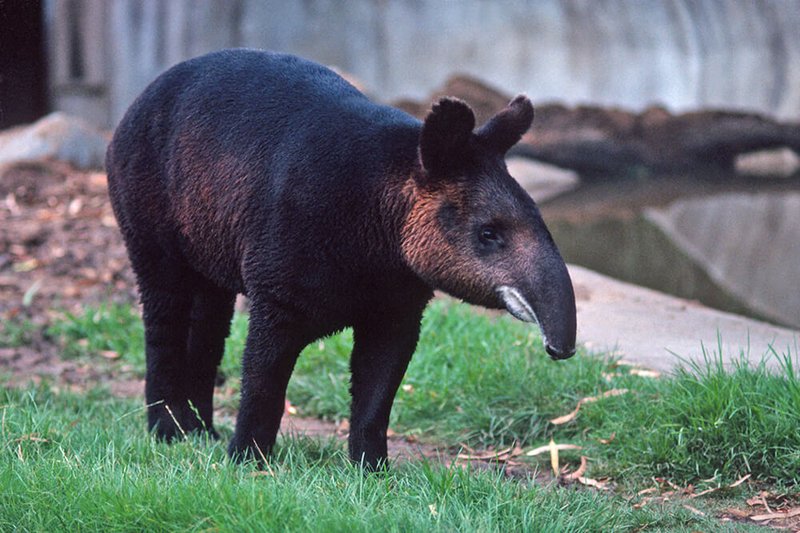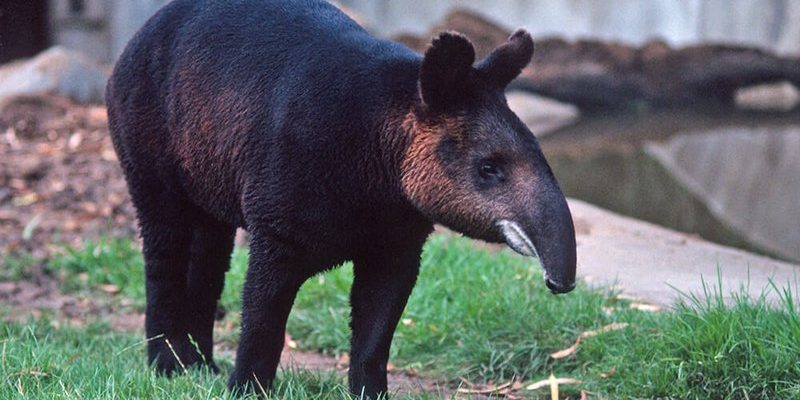
Imagine walking through the misty, lush hills of the Andes, where the mountain tapir roams. You might feel calm, even enchanted, but it’s worth knowing about their temperament and behavior. Though they primarily live in remote regions and tend to shy away from human interaction, there’s a lot more to their nature that’s important to understand. So, can the mountain tapir be dangerous to humans? Here’s what you need to know.
What Is the Mountain Tapir?
The *mountain tapir* (Tapirus pinchaque) is the smallest of the four tapir species. Native to the high-altitude forests of Colombia, Ecuador, and northern Peru, these creatures are uniquely adapted to living in cooler, mountainous environments. Standing about 3 feet tall at the shoulder, they have a stout, barrel-shaped body and are covered in thick, dark fur that helps keep them warm in their chilly habitat.
Mountain tapirs have a long, flexible snout, much like an elephant’s trunk, which they use skillfully to grab leaves and fruits. Their diet mainly consists of vegetation, making them herbivores at heart. Interestingly, these tapirs are often referred to as “living fossils,” as their ancestors date back millions of years, making them a fascinating piece of evolutionary history.
Behavior and Temperament
You might be wondering about their behavior. Mountain tapirs are not known for aggression. They’re generally solitary animals, preferring to keep to themselves. Their shy nature means that they usually avoid contact with other animals, including humans. However, like all wild animals, they can react defensively if they feel threatened.
When it comes to their temperament, mountain tapirs possess a certain level of curiosity. They may approach humans out of interest, not aggression. But remember, being curious doesn’t mean they’re friendly. If cornered or frightened, like most wild creatures, they can become unpredictable. So, while they may not actively seek out confrontations, it’s wise to respect their space and maintain a safe distance.
Can They Be Dangerous?
So, can the mountain tapir be dangerous to humans? The short answer is no, not typically. These animals are not predators and do not hunt humans. Most of the time, they would much rather scurry away than engage in a confrontation. The majority of interactions between mountain tapirs and humans occur when the animals are startled or feel threatened.
However, there are exceptions. For instance, if a mountain tapir feels trapped—perhaps during poaching attempts or habitat encroachment—it might react to defend itself. It’s essential to keep in mind that any wild animal, when feeling threatened, has the potential to inflict injury, even if they’re generally not dangerous.
Encounters with Humans
If you ever find yourself in the mountainous regions where these tapirs roam, it’s great to keep their presence in mind. Most likely, you won’t see one up close, as they prefer to stay hidden among the foliage. That said, there have been rare cases of mountain tapir encounters, especially in areas where their habitats overlap with human settlements.
Many locals should understand how to coexist with these gentle giants, respecting their territory and avoiding unnecessary encounters. If you’re hiking or exploring these regions, it’s crucial to stick to established trails. Being loud and moving in groups can help alert wildlife to your presence, reducing the chances of surprising a mountain tapir—or any wild animal, for that matter.
Conservation Status
One of the important points to consider is the conservation status of the mountain tapir. Unfortunately, their population is decreasing due to habitat loss, hunting, and other human activities. Encroachment on their natural environment has made it harder for them to thrive. As a result, they’re listed as vulnerable by the International Union for Conservation of Nature (IUCN).
Protecting the mountain tapir is not just about saving an intriguing creature; it also supports the entire ecosystem they inhabit. By maintaining healthy, biodiverse forests, we ensure that many species can coexist, which ultimately benefits our planet.
In a nutshell, the mountain tapir is not considered dangerous to humans. These gentle animals simply want to live their lives in peace, just like the rest of us. While they may feel threatened in certain situations, it’s important to respect their space and the unique habitats they call home. Understanding their behavior and knowing how to interact (or not interact) with them can help maintain a harmonious balance in the ecosystems where these fascinating creatures exist.
Next time you think about mountain tapirs, remember they are part of our shared world and play a critical role in their environment. Let’s cherish and protect them, ensuring that future generations can appreciate their uniqueness too.

